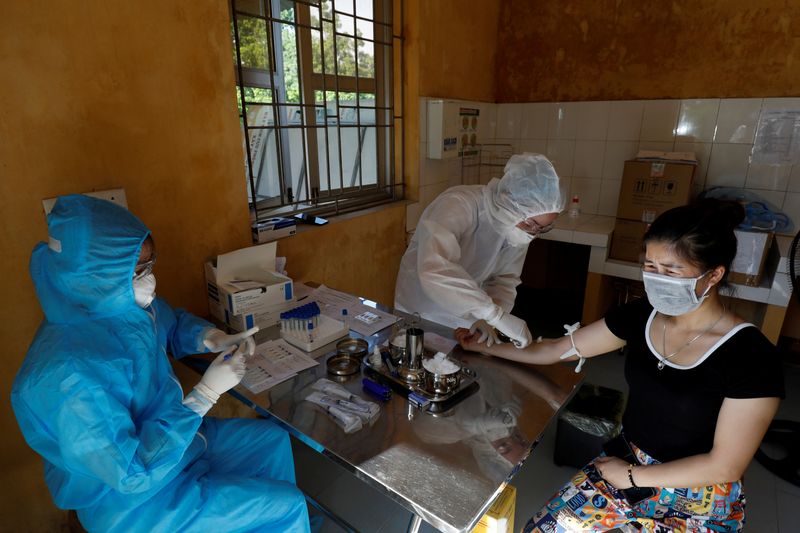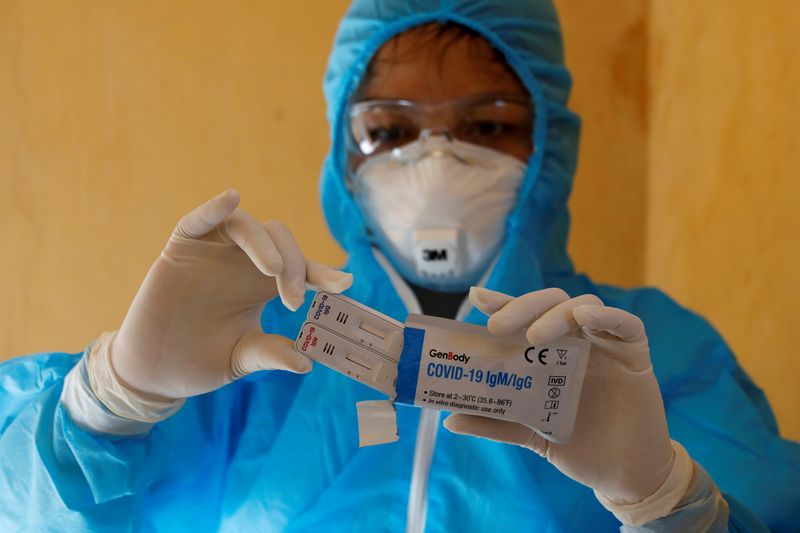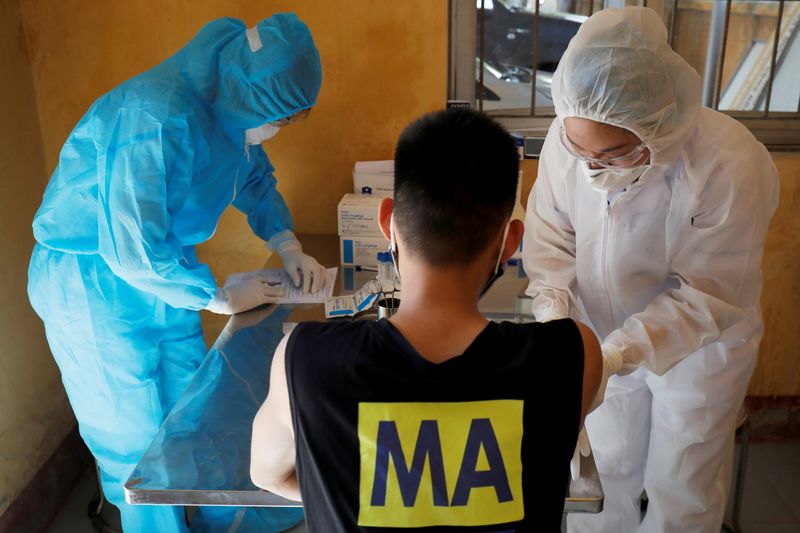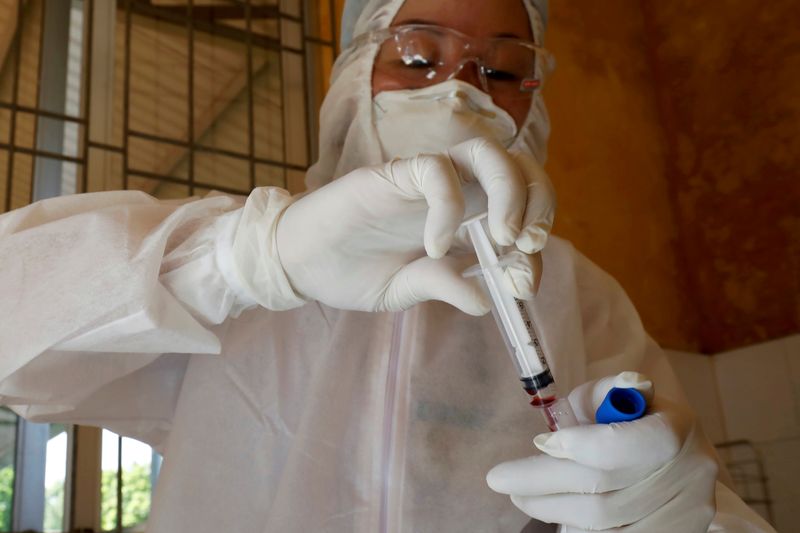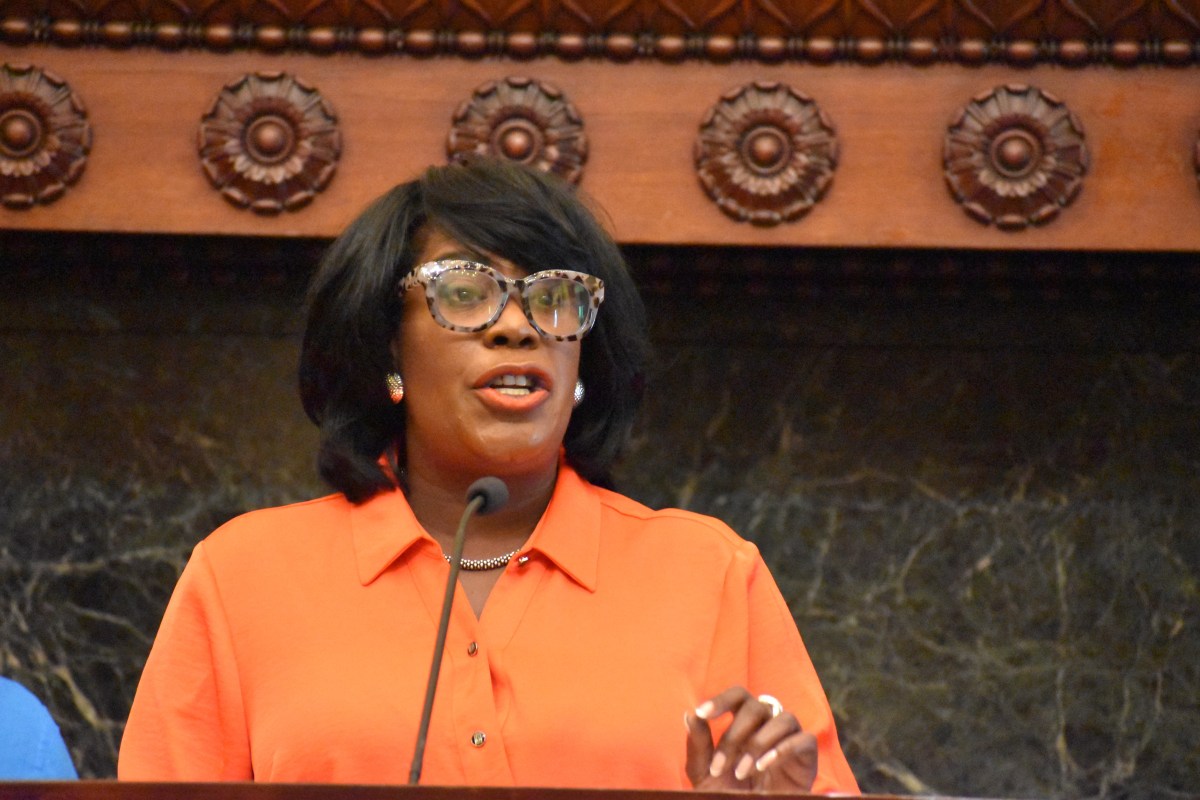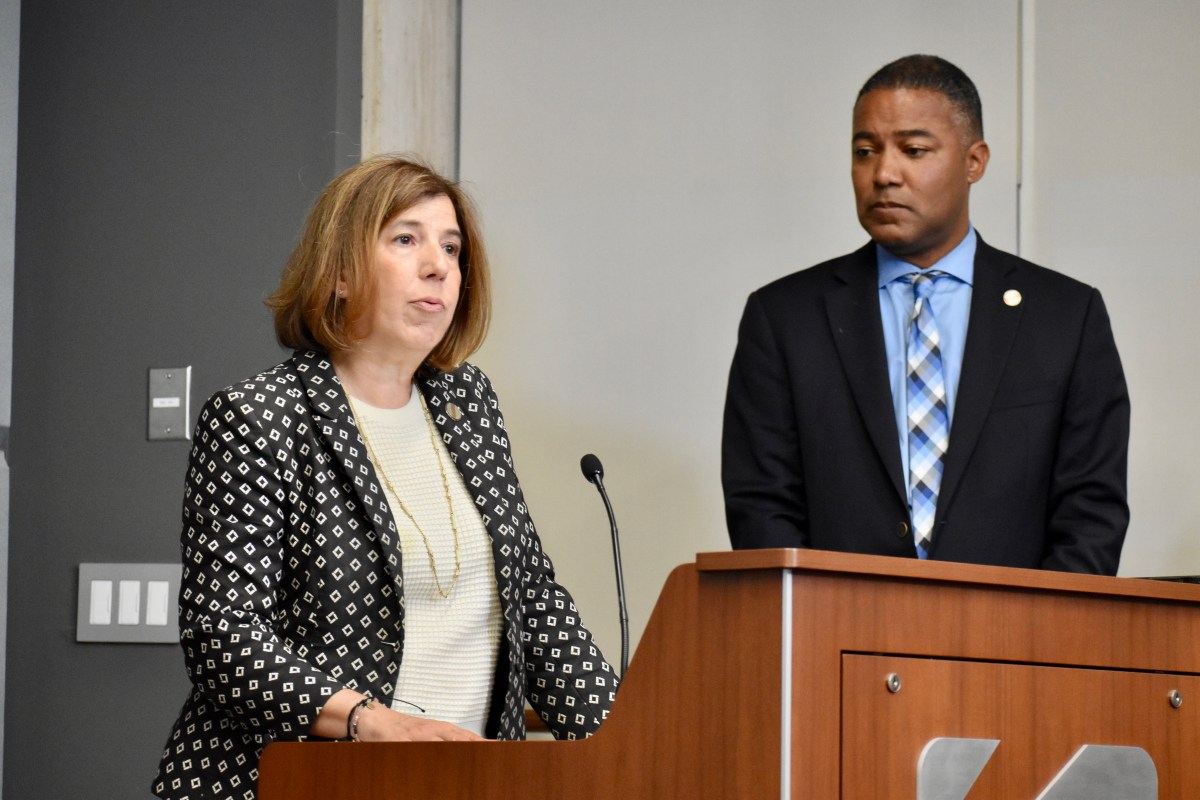HANOI (Reuters) – There had been so few coronavirus cases in Vietnam that every patient was known by a number: Patient 17 brought the virus back from Europe after an initial wave of infections from Wuhan. Patient 91, a British pilot, almost died.
Now there is a new number that has become an unwelcome marker.
Patient 416, a 57-year-old man in the central city of Danang, tested positive for coronavirus last week after more than three months without a new infection in the Southeast Asian country.
In just over a few days, a total of 47 people linked to Danang have tested positive, signalling the start of a third, untraceable and more concerning wave of infections in a country that had reopened faster than most of the world, confident it had beaten the disease.
The surge has spread to six cities and provinces in six days, including Hanoi, Ho Chi Minh City and the Central Highlands.
Vietnam’s Prime Minister, Nguyen Xuan Phuc, slammed his fist on the table during a meeting on Wednesday in which he warned that the entire country was now at risk of infection.
“Everyone, including health workers, had let their guard down months before the reintroduction of the virus,” said Truong Huu Khanh, head of the infectious diseases department at the Nhi Dong I Hospital in Ho Chi Minh City.
“People had stopped wearing masks in public and some health workers didn’t pay enough attention to ‘high risk’ cases”.
So successful was its fight against COVID-19 that the post-pandemic “new normal” in Vietnam looked very much like the old one. Bars, restaurants and hotels had reopened with minimal social distancing measures in place. In early July, the number of domestic air passengers even rose by 27% compared to the previous year, according to state media.
But that oasis in a pandemic-stricken world began to disintegrate when Patient 416 went to a local hospital in Danang with a cough and fever. The last person to test positive for an infection in the community was a 16-year-old girl in April.
Patient 416 was initially diagnosed with pneumonia, according to Vietnam’s health ministry, and did not test positive for the coronavirus until July 23. Days earlier, he had visited other hospitals in Danang to help his ailing mother, and attended one party and a wedding.
Vietnam’s outbreak had been under control, thanks to an aggressive contact-tracing system and a centralised quarantine programme, which had kept the coronavirus tally to under 500 cases, with no deaths.
“We acted fast and fiercely back in March but the virus is still breaking out all over the world,” said Khanh.
“We can’t let our guard down. This third wave is the cost for a moment of complacency”.
TESTING PATIENCE
The origin of the outbreak in Danang is unclear.
News of Patient 416’s infection prompted the mass exodus of over 80,000 tourists from the popular resort city. On Thursday, authorities in Hanoi said they would begin the mass testing of 20,000 of those tourists who had returned to the capital, as Vietnam’s human-powered contact tracing system was redeployed.
Some of the latest cases, including Patient 449, an American citizen based in Danang who appears to have developed symptoms in mid-June, indicate the virus had been quietly spreading in the city for several weeks.
It was not clear when Patient 449, who the health ministry said suffered from chronic pneumonia, was tested for the virus, but he was treated for COVID-like symptoms at three different hospitals before testing positive at a fourth hospital in Ho Chi Minh City.
The health ministry stopped publishing testing data in mid-May, when 260,000 tests had been carried out.
On Monday, the ministry said it had completed 430,000 tests since the pandemic began, indicating that testing continued to rise as thousands of returning overseas Vietnamese were quarantined.
It was not clear, however, to what extent COVID-19 testing outside quarantine had continued. Khanh said some outside testing, especially on patients with pneumonia symptoms, had been in effect but on a significantly smaller scale.
Although the two issues have not been officially linked, the government has over recent days made several strongly-worded statements about illegal immigration, indicating that the source of the new infections may have come from overseas.
“I think it’s most likely a reintroduction of the virus from elsewhere, sometime in the last two months, but how, when, or where remain entirely speculative at present,” said Guy Thwaites, director of the Oxford University Clinical Research Unit in Ho Chi Minh City.
“What is happening now in Vietnam was almost inevitable. It is almost impossible to isolate an entire country from a global pandemic,” said Thwaites
“Cases will occur”.
(This story corrects name to ‘Khanh’ in paragraphs seven, 13, 22)
(Reporting by James Pearson; Additional reporting by Phuong Nguyen and Khanh Vu; Editing by Raju Gopalakrishnan)

